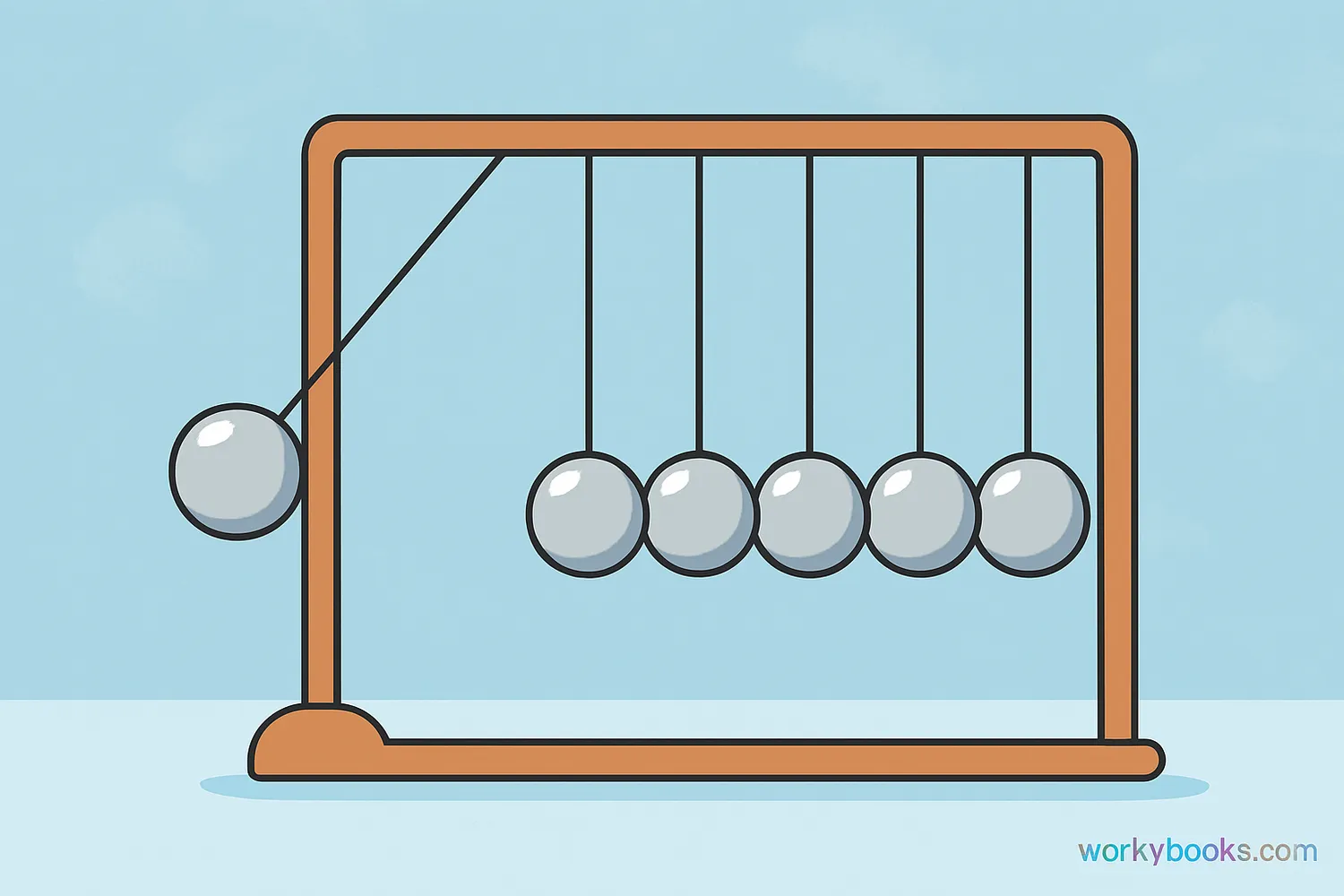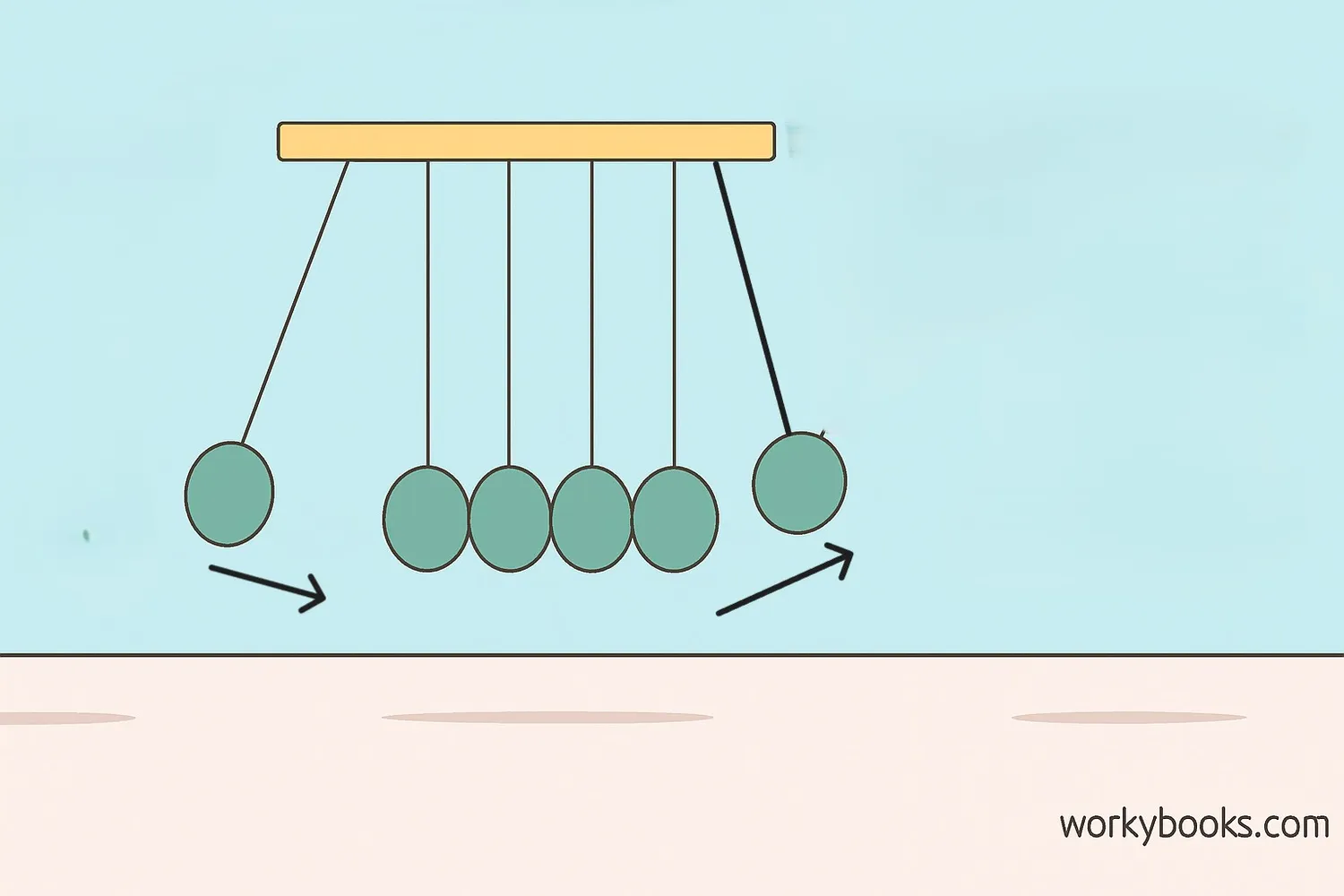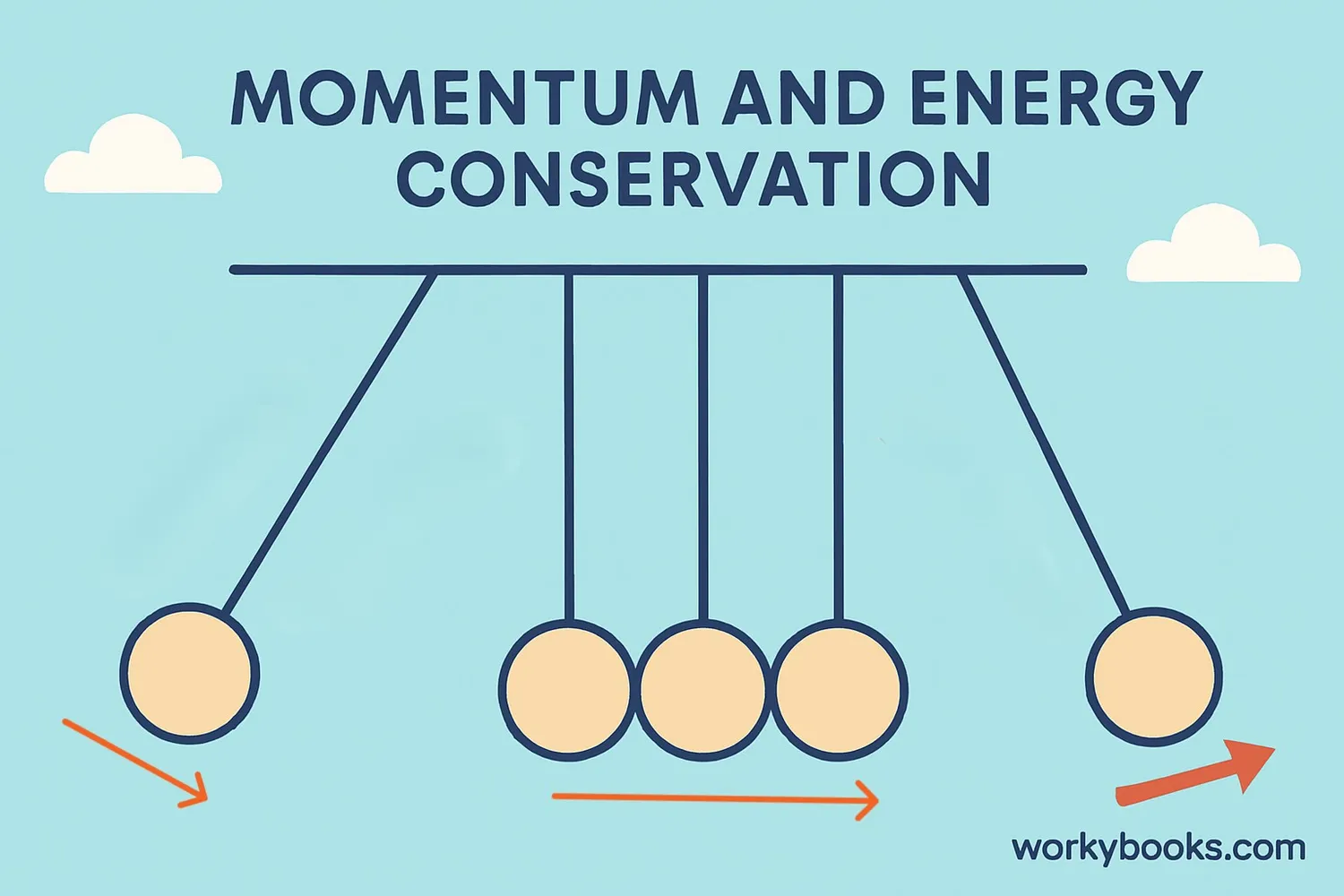Newton's Cradle - Definition, Examples, Quiz, FAQ, Trivia
Discover how swinging balls demonstrate the laws of physics!
What is Newton's Cradle?

Newton's Cradle is a device that demonstrates the conservation of momentum and energy using swinging balls. It's named after Sir Isaac Newton, who developed the laws of motion that explain how it works.
A typical Newton's Cradle consists of several metal balls suspended from a frame in a straight line. When one ball is lifted and released, it strikes the next ball, and the energy transfers through the line of balls, causing the last one to swing out.
This simple device helps us visualize important physics concepts that govern how objects move and interact with each other.
Did You Know?
Newton's Cradle was actually invented in 1967 by English actor Simon Prebble, not by Isaac Newton himself!
How Newton's Cradle Works

Newton's Cradle works through a series of energy transfers. Here's what happens step by step:
Lift and Release
One ball is lifted to the side and released
Swing Down
The ball swings down and gains speed
Collision
It collides with the next ball in line
Energy Transfer
Energy transfers through the stationary balls
Opposite Swing
The last ball swings out on the other side
The process then reverses, with the ball that swung out coming back to hit the others, and the first ball swinging out again. This continues until friction and air resistance slowly rob the system of energy, and the balls eventually stop moving.
The balls need to be perfectly aligned and of equal mass for this to work properly. If you lift two balls and release them, two balls will swing out on the other side!
Perfect Alignment
The balls in Newton's Cradle must be perfectly aligned at rest. If they're touching when stationary, the device won't work correctly because energy won't transfer properly.
Physics Principles in Action

Newton's Cradle demonstrates two fundamental physics principles:
Conservation of Momentum
The total momentum before collision equals the total momentum after collision
Conservation of Energy
Energy changes form but the total amount stays the same
Action and Reaction
Demonstrates Newton's Third Law of Motion
When the first ball swings down, it has kinetic energy (energy of motion). When it hits the second ball, that energy transfers through the line of balls. The last ball receives this energy and swings upward, converting kinetic energy back to potential energy (stored energy).
Newton's Third Law tells us that for every action, there is an equal and opposite reaction. When ball A hits ball B, ball B pushes back on ball A with equal force. This is why the first ball stops while the last ball moves.
In an ideal Newton's Cradle with no energy loss, the balls would swing forever. But in the real world, energy is lost to sound, heat, and air resistance, so the balls eventually stop.
Newton's Cradle Knowledge Check
Test your understanding of Newton's Cradle with this quiz. Answer all 5 questions to see how much you've learned.
Frequently Asked Questions
Here are answers to some common questions about Newton's Cradle:
Interesting Facts About Newton's Cradle
Discover some fascinating information about Newton's Cradle:
Modern Invention
Despite demonstrating centuries-old physics principles, Newton's Cradle was only invented in 1967 by English actor Simon Prebble, who named it after Newton's laws of motion.
Popular Desk Toy
Newton's Cradle became a popular executive desk toy in the 1970s, symbolizing the precision of physics and the satisfaction of watching perpetual motion (even though it's not truly perpetual).
Nearly Perfect Balls
The balls in quality Newton's Cradles are manufactured to be nearly perfect spheres with extremely smooth surfaces to minimize energy loss during collisions.
Educational Tool
Newton's Cradle is used in physics classrooms worldwide to demonstrate conservation laws in a visual, memorable way that helps students understand abstract concepts.


